20th Armoured Brigade hone their skills in southern Germany
Over 2,000 troops and 750 vehicles from 20th Armoured Brigade have been preparing for the scenarios likely to be faced in future conflicts.
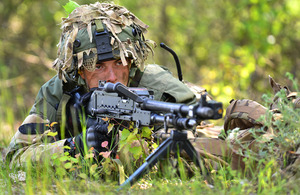
A gunner from 1st Battalion The Princess of Wales's Royal Regiment looks along the sights of a general purpose machine gun [Picture: Corporal Wes Calder RLC, Crown copyright]
Exercise Bavarian Charger is the first of 3 large exercises being undertaken by the brigade this summer, and is designed to prepare personnel for contingency operations post-Afghanistan.
Captain Strachan-Hayes from Headquarters 20th Armoured Brigade said:
This is the culmination of 4 or 5 months of training within the battle groups of the brigade where we have taken individual soldiers and built up their skills to platoon then company level.
We don’t know what contingency will look like; the future of operations might be very different so we have to look at a broad spectrum of capabilities.
This exercise has focused on the worst case scenario; how we might attack or defend against a force that is of parity, integrating the all arms concept with the aviation assets, and transitioning from offensive operations into security operations where we would be required to protect the local nationals and reassure the population.
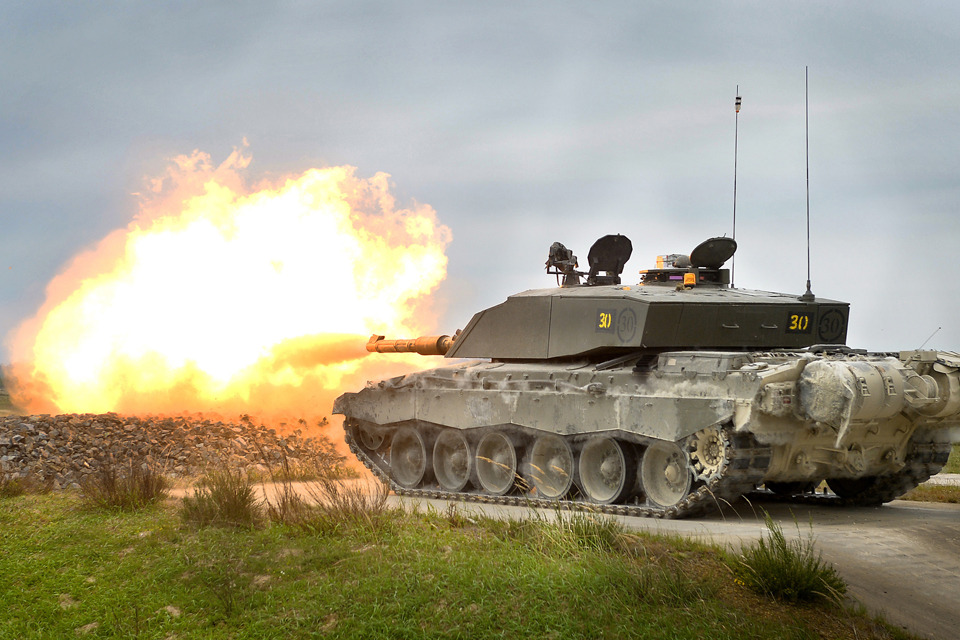
A British Challenger 2 main battle tank live firing in Grafenwöhr, Germany [Picture: Corporal Wes Calder RLC, Crown copyright]
The training was split into 3 phases starting with a demanding 2-week live firing package on the ranges of Grafenwöhr, which culminated in a series of attacks with the combined firepower of Challenger tanks, Warriors, Apache helicopters, infantry and artillery assets.
The brigade then travelled to Hohenfels, 100 kilometres further south. This move through open German countryside was designed to simulate the kind of challenges facing an armed force moving through a hostile environment. It also provided an opportunity to test the skills of 1 Logistic Support Regiment, who were co-ordinating the move.
The third phase took place in the heavily wooded and hilly terrain of the Hohenfels training area where the focus was on the planning and execution of operations at battle group and company level.

Soldiers from 2nd Battalion The Rifles conduct house-clearing in a village [Picture: Corporal Wes Calder RLC, Crown copyright]
The 5th Battalion The Rifles (5 RIFLES) and Queen’s Dragoon Guards Battle Groups were tested on tactics which involved sweeping across the battlefield in armoured vehicles before switching to peace support operations that required a more subtle and tempered approach.
For many of the Challenger crews from C Squadron of the Queen’s Royal Hussars this was the first time they had worked together on this kind of terrain and also the first time they had used their tanks in a counter-insurgency battle.
Besides the demanding pace of the exercise another challenge came in the form of the weather, with record rainfall over the 3 weeks causing severe flooding in south Germany and putting a dampener on morale, especially for the infantry troops of 5 RIFLES who were exposed to the unrelenting downpours during the digging-in phase.
Despite this, brigade personnel achieved some valuable training and had the chance to refresh their core skills having returned from Afghanistan in 2012.

Soldiers from the Queen's Dragoon Guards Battle Group disembark a German CH-53G Stallion helicopter [Picture: Corporal Wes Calder RLC, Crown copyright]
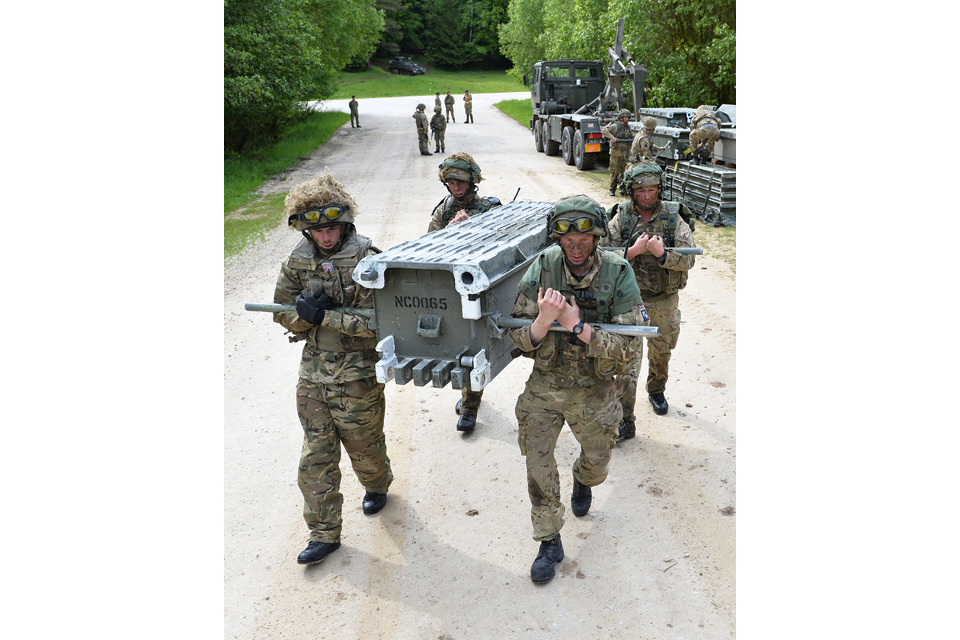
Soldiers from 37 Armoured Engineer Squadron build a 5-bay medium girder bridge for armoured vehicles to use [Picture: Corporal Wes Calder RLC, Crown copyright]

A Javelin (anti-tank weapon) fire team from 1st Battalion The Princess of Wales's Royal Regiment [Picture: Corporal Wes Calder RLC, Crown copyright]
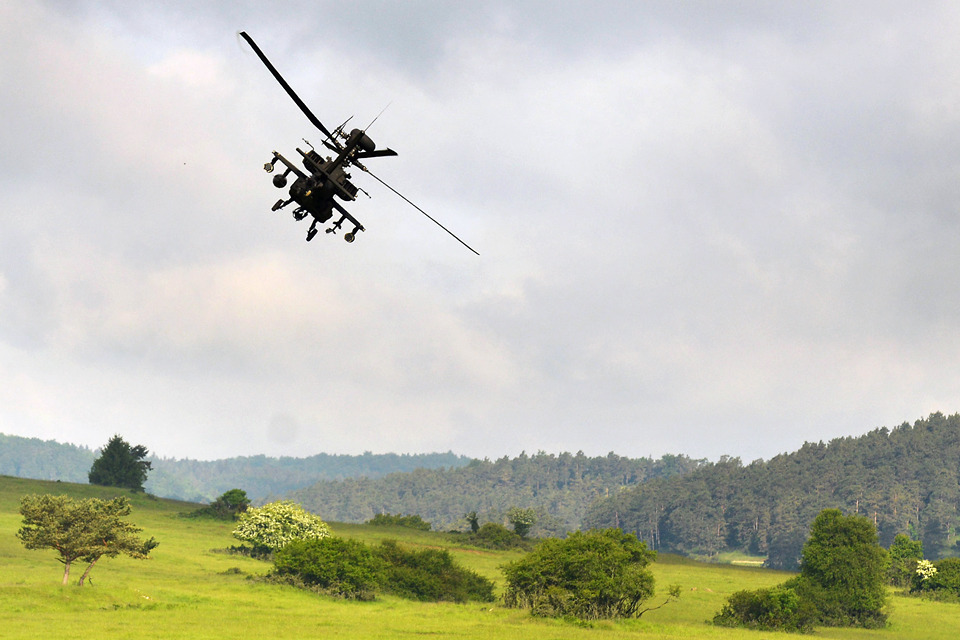
A British Apache attack helicopter provides close air support for the troops on the ground [Picture: Corporal Wes Calder RLC, Crown copyright]
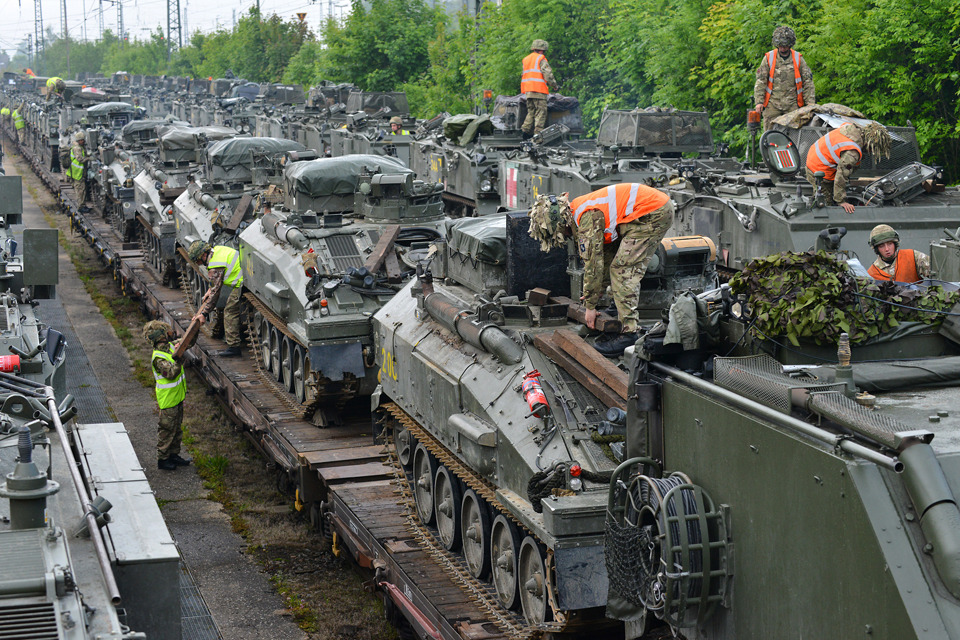
Armoured vehicles arrive in Hohenfels from Grafenwöhr by cargo train [Picture: Corporal Wes Calder RLC, Crown copyright]

A panoramic view of British Challenger 2 main battle tanks and Warrior infantry fighting vehicles on the live firing range at Grafenwöhr [Picture: Corporal Wes Calder RLC, Crown copyright]
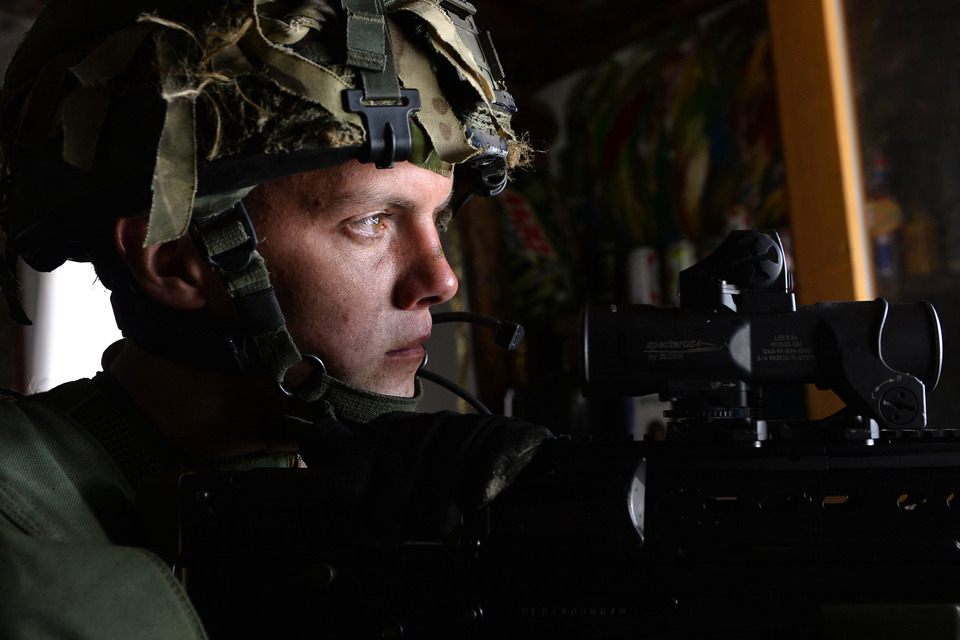
A soldier from 5th Battalion The Rifles provides cover for his colleagues [Picture: Corporal Wes Calder RLC, Crown copyright]

A British Warrior infantry fighting vehicle patrolling across the live firing range in Grafenwöhr [Picture: Corporal Wes Calder RLC, Crown copyright]

A British Challenger 2 main battle tank live firing in Grafenwöhr [Picture: Corporal Wes Calder RLC, Crown copyright]
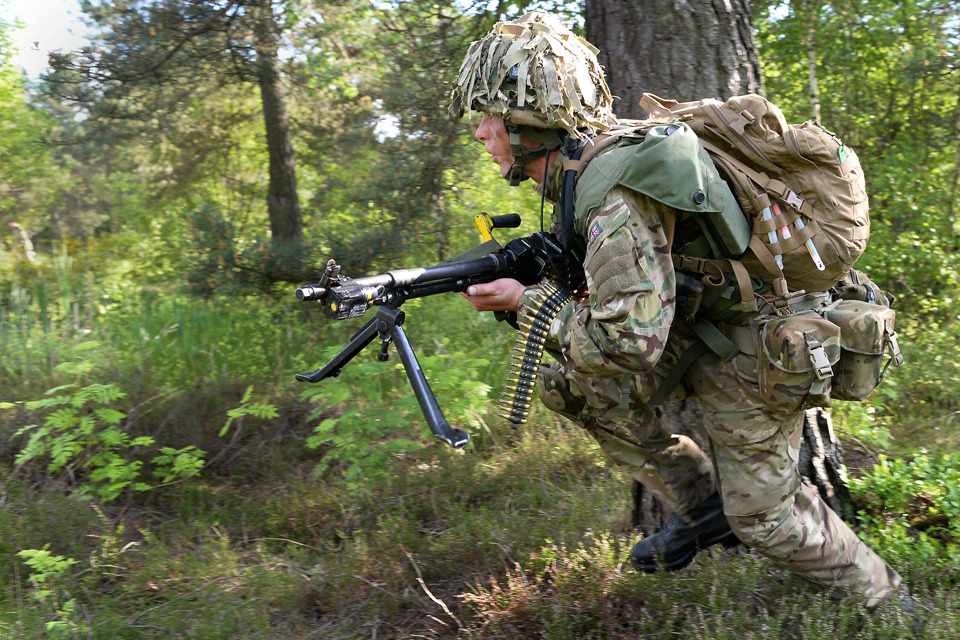
A soldier from the Queen's Dragoon Guards Battle Group moves to a firing position [Picture: Corporal Wes Calder RLC, Crown copyright]

A soldier from the Queen's Dragoon Guards Battle Group on a foot patrol [Picture: Corporal Wes Calder RLC, Crown copyright]
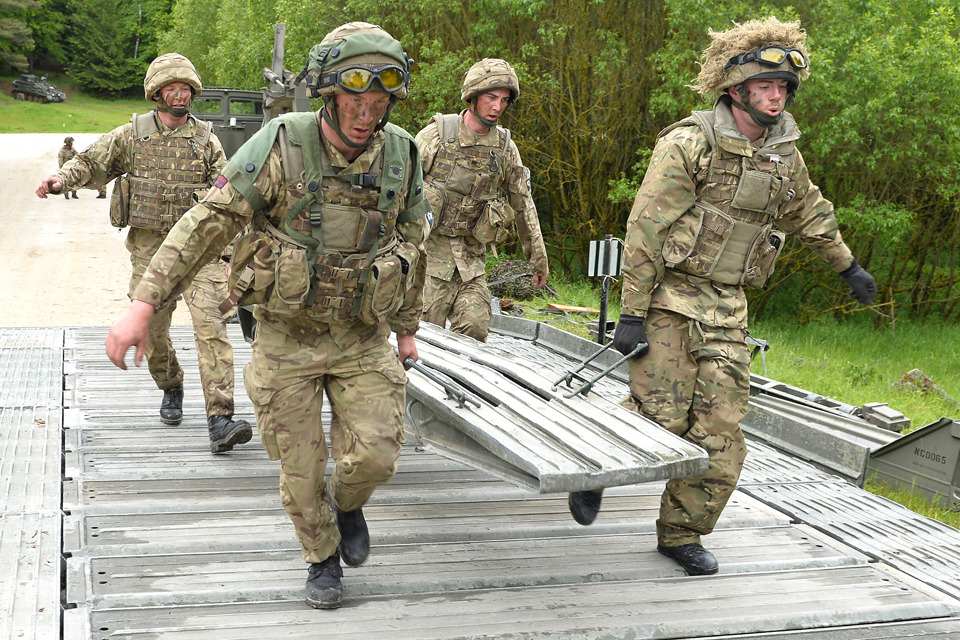
Soldiers from 37 Armoured Engineer Squadron build a 5-bay medium girder bridge for armoured vehicles to use [Picture: Corporal Wes Calder RLC, Crown copyright]
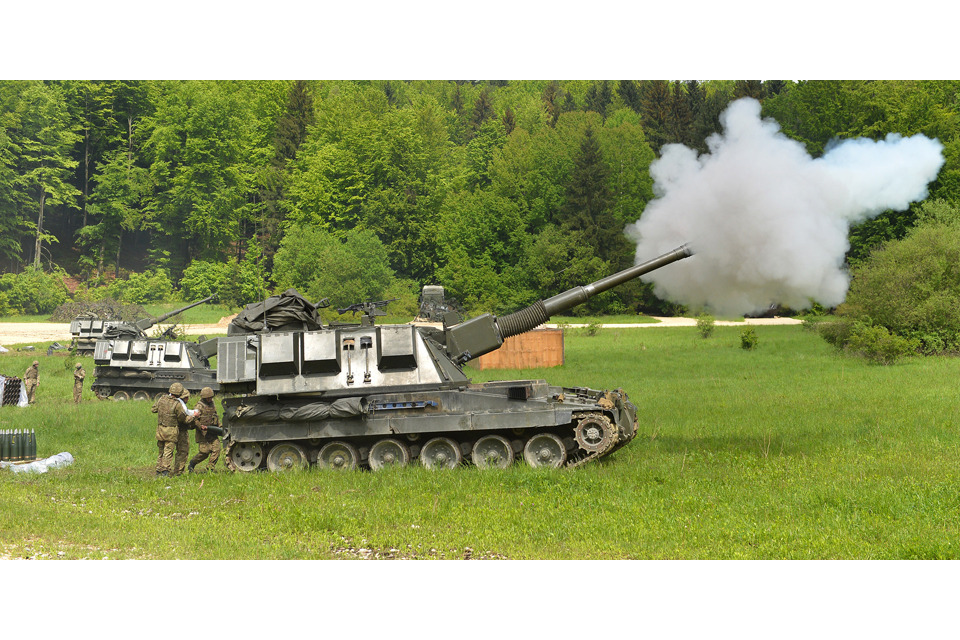
An AS90 self-propelled gun from 26th Regiment Royal Artillery firing 155-millimetre shells [Picture: Corporal Wes Calder RLC, Crown copyright]